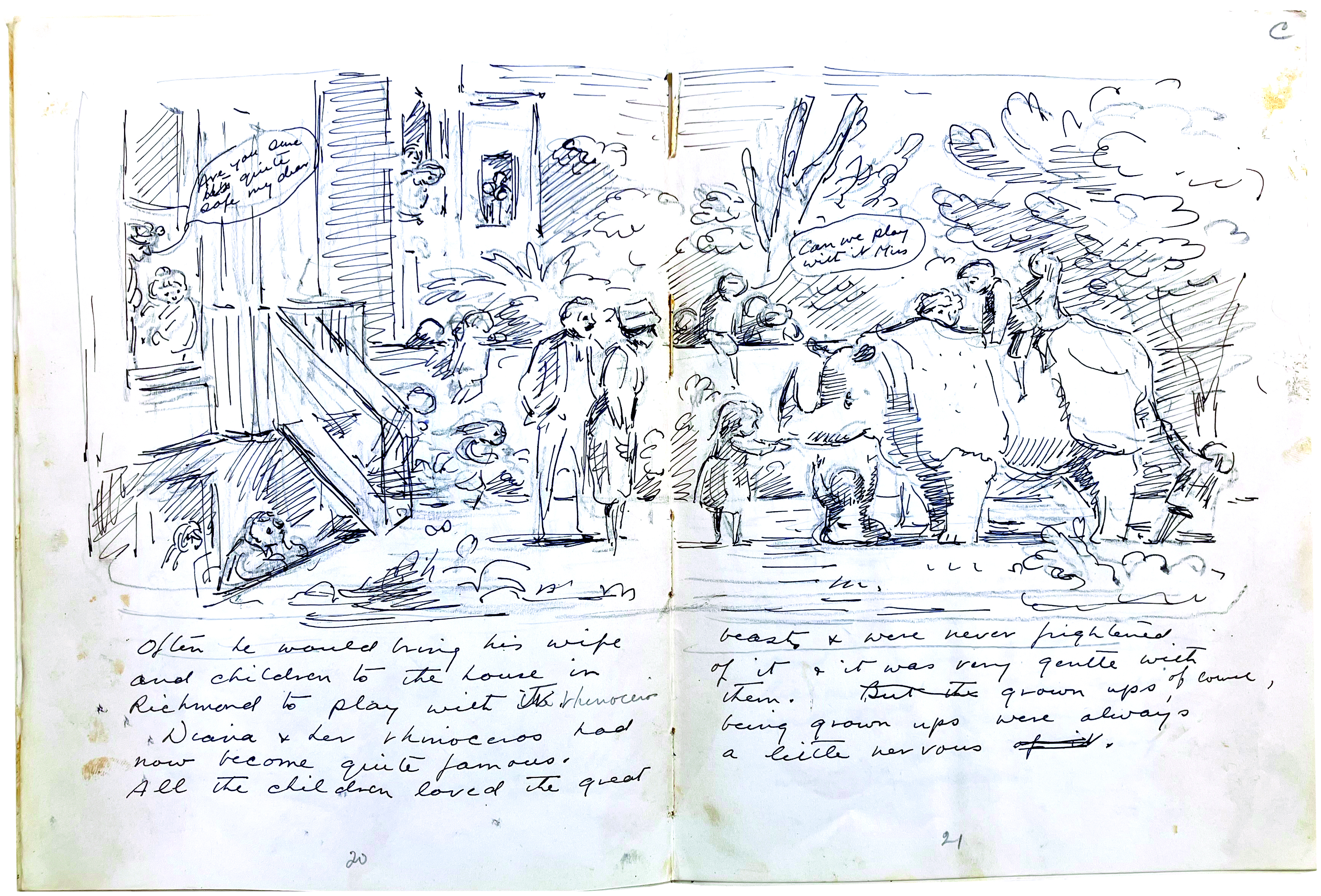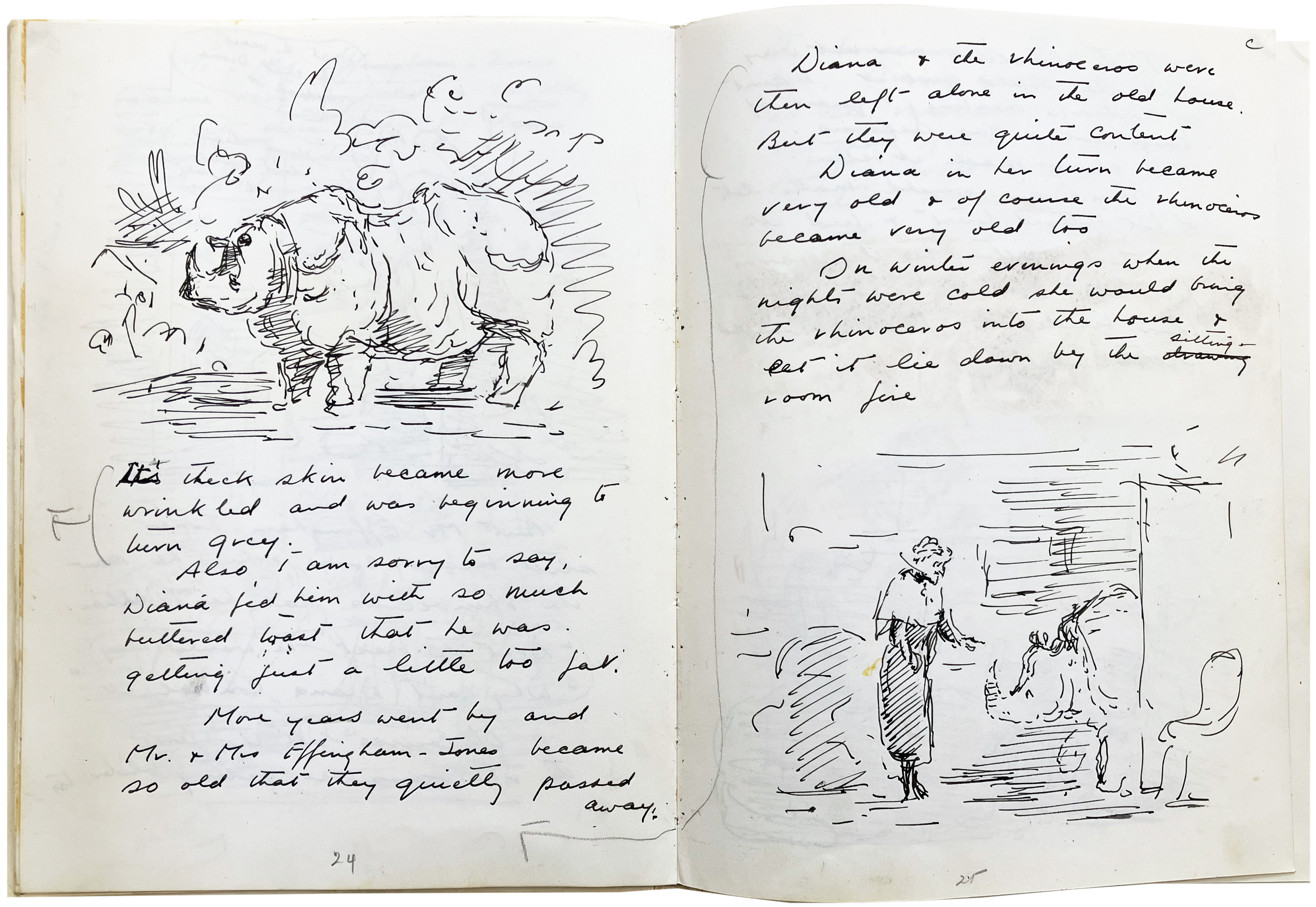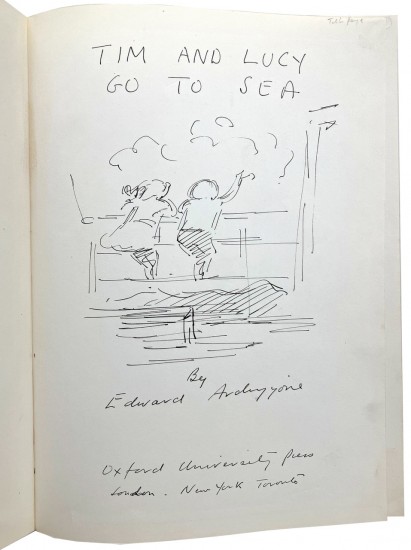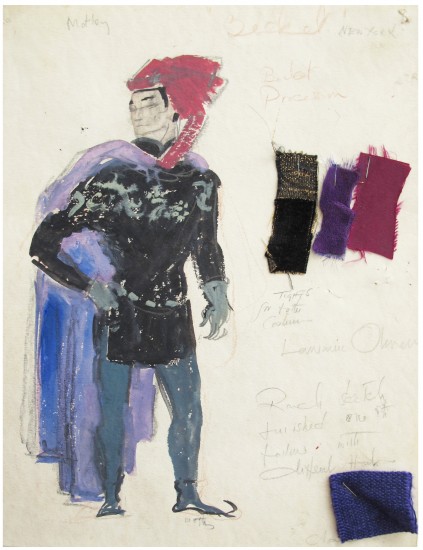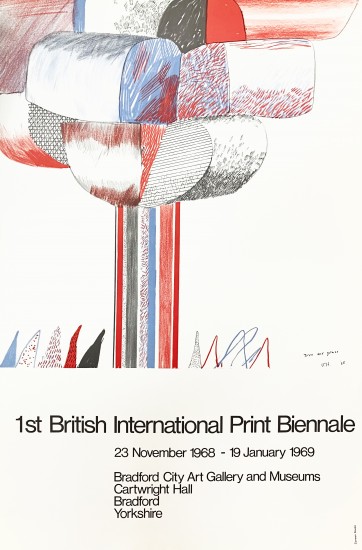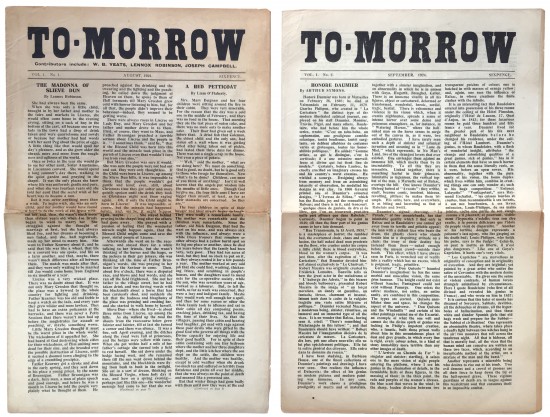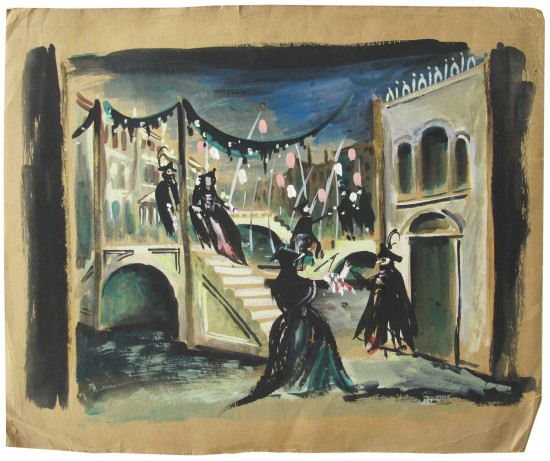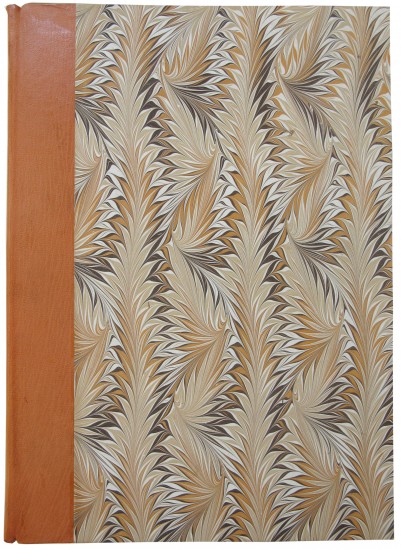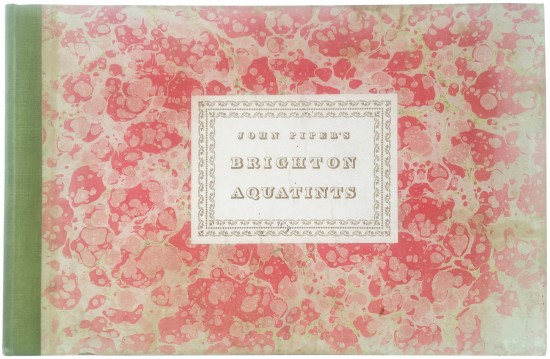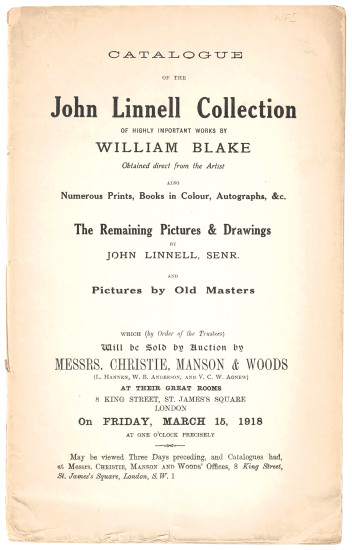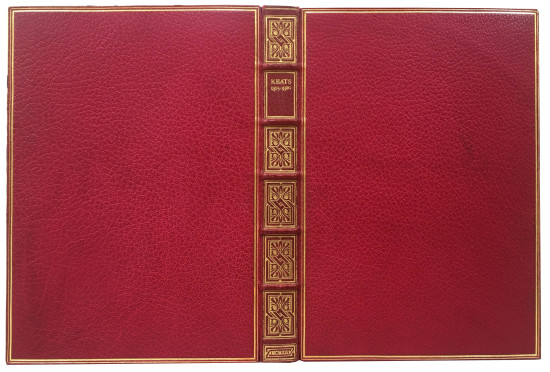Final Draft: Diana and Her Rhinoceros. (Original Maquette)
Ardizzone, Edward
(London). (By the author / artist). c.1964
The complete original maquette, presented to his grand-children, for Edward Ardizzone's 1964 illustrated book 'Diana and Her Rhinoceros'.
Ardizzone's presentation to his grand-children - it matches that in the published book - is in black ink to the front free endpaper: 'To my grandchildren / Susannah, Quentin & / Dominic who live at / 43 Queen's Road, Richmond, / Surrey, England.'
The story of a 'sensible child', Diana Effingham-Jones, her baby brother and her parents, 'Diana and Her Rhinoceros', tells of how an escaped rhinoceros appears in the Effingham-Jones household. Suffering from a pronounced cold, the rhinoceros is treated by Diana (her mother 'collected medicines') and becomes a much-loved member of the family and an attraction of the neighbourhood despite the efforts of the zoo (it sent three men to shoot the rhinoceros) and the objections of her father (grumpy that it 'was very fond of eating dahlias'). The book concludes with Diana, now an 'old old lady all in white', and with the rhinoceros, now 'an old old white rhinoceros' taking 'their nightly walk under the shadowy trees of Queen's Road, Richmond, Surrey, England', the street that was the home of Ardizzone's grand-children.
'It is a different sort of book from what I have concocted before ... '. (Edward Ardizzone).
Although the book was printed in landscape format, this maquette which matches the published version very closely was executed by Ardizzone in portrait format. The minor differences are largely due to this difference in format - some images are expanded due to space - although there are also changes to the text ('Now Mrs Effingham-Jones, being a silly woman, had collected lots of medicines' is not in the published version) and one image has been crossed through and Ardizzone has noted in the margin in pencil: 'Insert Diana taking Rhino for a walk?', an image that is in the final book.
The central section of the book has been reworked by Ardizzone extensively with scenes, text and images moved and replaced. Additional leaves pasted over the originals present the final version (the glue perished these are now detached) and enable an important insight into Ardizzone's practise and working methodology. Each change to be appreciated in situ: all feature replacement illustration and textual changes, altering the order of the narrative or improving an unsatisfactory image; the section 'As the years went by Diana grew into a tall schoolgirl, then into a bright young woman & then into a comfortable middle-aged lady' has been drawn, altered and rearranged by Ardizzone three times.
[see Alderson 107; see Alan Powers' 'Edward Ardizzone Artist and Illustrator', London, 2016, pp. 119 - 120 for an illustration of this maquette].
Ardizzone's presentation to his grand-children - it matches that in the published book - is in black ink to the front free endpaper: 'To my grandchildren / Susannah, Quentin & / Dominic who live at / 43 Queen's Road, Richmond, / Surrey, England.'
The story of a 'sensible child', Diana Effingham-Jones, her baby brother and her parents, 'Diana and Her Rhinoceros', tells of how an escaped rhinoceros appears in the Effingham-Jones household. Suffering from a pronounced cold, the rhinoceros is treated by Diana (her mother 'collected medicines') and becomes a much-loved member of the family and an attraction of the neighbourhood despite the efforts of the zoo (it sent three men to shoot the rhinoceros) and the objections of her father (grumpy that it 'was very fond of eating dahlias'). The book concludes with Diana, now an 'old old lady all in white', and with the rhinoceros, now 'an old old white rhinoceros' taking 'their nightly walk under the shadowy trees of Queen's Road, Richmond, Surrey, England', the street that was the home of Ardizzone's grand-children.
'It is a different sort of book from what I have concocted before ... '. (Edward Ardizzone).
Although the book was printed in landscape format, this maquette which matches the published version very closely was executed by Ardizzone in portrait format. The minor differences are largely due to this difference in format - some images are expanded due to space - although there are also changes to the text ('Now Mrs Effingham-Jones, being a silly woman, had collected lots of medicines' is not in the published version) and one image has been crossed through and Ardizzone has noted in the margin in pencil: 'Insert Diana taking Rhino for a walk?', an image that is in the final book.
The central section of the book has been reworked by Ardizzone extensively with scenes, text and images moved and replaced. Additional leaves pasted over the originals present the final version (the glue perished these are now detached) and enable an important insight into Ardizzone's practise and working methodology. Each change to be appreciated in situ: all feature replacement illustration and textual changes, altering the order of the narrative or improving an unsatisfactory image; the section 'As the years went by Diana grew into a tall schoolgirl, then into a bright young woman & then into a comfortable middle-aged lady' has been drawn, altered and rearranged by Ardizzone three times.
[see Alderson 107; see Alan Powers' 'Edward Ardizzone Artist and Illustrator', London, 2016, pp. 119 - 120 for an illustration of this maquette].
[16 leaves + inserted leaf + 2 inserted leaves + additional pasted correction slip; pp. (i), 30]. 4to. (258 x 194 mm). Dedication by Ardizzone to front free endpaper (see below), leaf with title with pictorial vignette and 15 leaves with manuscript text and illustration recto and verso all in black ink by Edward Ardizzone, 28 illustrations in total (plus one crossed through in pencil), one leaf with additional pasted correction leaf, two spreads with additional pasted correction bifolia, one additional pasted correction slip (all save this last with perished glue and leaf / bifolia detached), occasional corrections, insertions and deletions in Ardizzone's hand throughout in pencil and ink, later (?) manuscript pagination in pencil at lower centre of leaves Original white paper-covered boards, white paper dust-jacket with manuscript titles in black ink to front cover and spine, plain white endpapers, jacket rubbed and with some soiling, occasional minor tears and splits at head and foot of spine.
#48096



